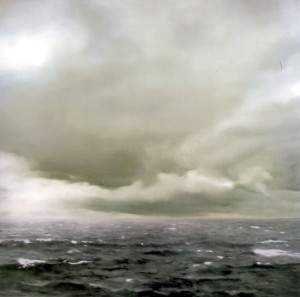 Nordstrom, Carolyn. 2007. Global Outlaws: Crime, Money, and Power in the Contemporary World. Berkeley: University of California Press.
Nordstrom, Carolyn. 2007. Global Outlaws: Crime, Money, and Power in the Contemporary World. Berkeley: University of California Press.
Carolyn Nordstrom’s book is an ethnography about the extra-legal, as she calls them, flows and networks, which she sees as constituting a “series of power grids that shape the fundamental econo-political dynamics of the world today.” She’s interested in “the intersections of crime, finance, and power in activities that produce something of value: monetary, social, and cultural capital, power, patronage, survival” (xvii). The book is implicitly about geographical scale—a pattern for books on similar subjects and rightly so. The politics of scale emerge throughout the book: from the war orphaned cigarette vendor to the transoceanic shipping liners, the regional warlord to the offshore bank account. Nordstrom makes these places, processes, and people come alive throughout the pages of the book. Globalization (licit or illicit) is not a force passively thrust upon people; it is actively shaped by people everywhere, whether they be powerful or ostensibly powerless.
From the dusty Angolan streets cruised by the orphan cigarette hawker, gives a sense of how Nordstrom is able to extrapolate a host of global connections:
A vast network stretched from this town out through the country’s gem and mineral mines and along its precious timber and valuable agricultural resources, through troops and civilians, profiteers and thieves, and then across international borders to link into large exchange systems that operate both legally and illegally, running all the way to far-flung criminal organizations, multinational corporations, and superpower urban commodity centers. (8)
Nordstrom is, of course, highly critical of facile divisions in both research and policy between the legal and illegal (23). And, indeed, throughout the book diverse sources, from gangsters and customs officials, all identify multinational corporations as the largest infringers of economic legality.
Business is done in the ebb and flow of il/legalities. These are so basic to commerce that only the smallest percentage is captured by the law. This is in part because law officials can’t, so to speak, empty the ocean with a cup. But it’s also because the unregulated is intrinsically interwoven into formal business in a way that judicial systems can’t easily separate. Even determining where the lines of il/licit can or should be drawn is a judicial challenge. (89)
Nordstrom is also careful to note how legal infrastructures—broadly conceived as both social, governmental, and physical—are just as conducive and necessary for extra-legal actors, industries, and trades. The trend is apparent in war economies in which war itself becomes a resource to be harnessed, but she does not ascribe to a resource curse argument, noting there’s usually little fighting over the resources themselves.
More important, she says, are broader commodity networks and infrastructures that constitute the “complex interplay of economic development and profiteering” (40). She notes, for instance, that the UN estimates that Angola’s informal import earnings amount to almost ten times what the country might make from blood diamond earnings (54). She even ventures that these vast extra-legal economies might introduce econo-political dynamics toward for more stable arrangements to emerge. Mainly, she argues that illicit accumulators will increasingly seek more stable arrangements. On this claim, I think she’s on much shakier ground, particularly in terms of commodities that are themselves totally illicit—a subject and analysis left largely untouched (e.g. 130).
Some of the most fascinating chapters are the ones on containers, shipping, and ports. First, there’s the strange legal liminality that has always graced the sea. Some international shipping laws are still based on classical Rhodian sea law (116). The sea and commerce also demonstrate how “international associations of people with no formal governing controls could and did institute laws, courts. Mediation mechanisms, regulations, and codes of conduct – ones capable of enduring centuries of change from wagon-based transport to cargo jets and massive container ships” (117). Shipping itself is one of those stubborn geographical realities. Stuff has to get from here to there, and ships are still the overwhelmingly dominant way we still do this. And ports, of course, are only able to inspect 5% (at most!) of the containers that pass through their docks.
As one of her sources put it: you either “get it” or you don’t. The same source added, “These are all parts in an intricate maritime system that you must think of in toto, globally: when you are making a decision of any kind, you have to think in terms of not only this port, but all the ports interconnected globally” (201). The entire global supply chain could come to a grinding and snarling halt with a single place jamming up the world (201).
(Note to self: remember to refer back to that dealer’s comments on the origins of “outlaw” from the Hereward, which has an implicit spatial connotation of “dropping out” into the “forest.”)
